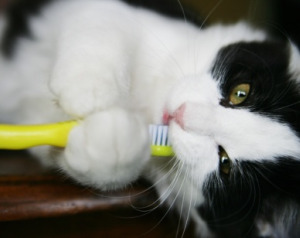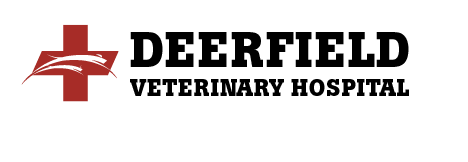Pets Need Dental Care Too!

Did you know that pets suffer from dental disease just like people do? One of the worst things about dental disease is the pain. Dogs and cats don’t always show how uncomfortable they are. Pets can have very serious dental problems, such as infected teeth, jawbone abscesses or fractured teeth and never say, “ouch” or hold their paw to their jaw, but they do hurt! Many times, when these problems are corrected, a pet’s entire personality can change. They often become more social, interactive and playful because they are no longer in pain.
So, how do you check for dental disease in your pet? First, look for yellow or brown color of the teeth, not just in the front teeth, but also the back part of the mouth. While this sounds very simple, most pet owners never lift their pet’s lip and look inside the mouth, so… Lift The Lip! Next, just smell the breath. It may not be minty fresh but it should not be foul smelling. If it is, bad bacteria have already set up and are working on infecting the gum and even loosening the attachment of the teeth to the jawbone. This means that dental disease has been progressing for months or years without you knowing.
A complete veterinary dental exam is necessary to discover hidden dental disease. Most veterinarians today use a 12-step process for this procedure. This assures that nothing is missed and all problems are properly treated.
The steps include: a history and physical exam, an oral survey checking for such things as cancer and missing teeth, ultrasonic scaling of the teeth and subgingival scaling. Subgingival scaling is critically important. This involves removing tartar and debris from the part of the tooth you can’t see – the part under the gum. This is where infection sets up.
Following the exam and cleaning, a complete polishing is done to remove irregularities in the enamel in order to slow future accumulation of tartar. Next, the gum pockets are flushed and treated with antiseptic. At this point, many veterinarians will apply a fluoride or enamel sealant treatment.
The next step includes compete charting of every tooth and the surrounding gum and bone tissue. Using a dental probe, the gum line around each tooth is probed for pockets where infection may exist. The location and depth of each pocket is recorded in the medical record, just as you have seen done at your own dentist’s office.
Next, a complete set of dental x-rays is taken. Dental x-rays have become the standard of care in veterinary practice. Without them, it is impossible to find many of the most serious dental problems such as fractured teeth, abscesses and developmental problems. Only by taking x-rays can you know the complete health status of your pet’s mouth.
Finally, a treatment plan is developed for the problems found, all necessary treatments are done and instructions are given for home care and any follow-up care that is needed. Pet owners are also taught ways to provide at home dental care to help keep their pet’s mouth and teeth healthy.
In order to perform a proper dental exam and treatment, it is essential that the pet be under anesthesia. Anesthesia today is very safe, using the most modern medications, anesthetic gases and monitoring by skilled technicians. Care for a veterinary patient under anesthesia is very similar to that of a human patient.
While the so called “no-anesthesia pet dentals” may sound appealing, the process has many risks and leaves most pets to suffer in silence simply because no actual treatment is done. This is often performed by unlicensed and untrained trained individuals who only scrape tartar from the outside of the few visible teeth while your pet is awake (assuming your pet will hold still). The process has no medical benefit whatsoever.
They cannot remove tartar from the inside surfaces of the pet’s teeth, and more importantly, they cannot remove tartar below the gum line. Often charging hundreds of dollars, these people prey on a pet owner’s fear of anesthesia. Worst of all, pet owners believe their pet’s teeth are healthy but underlying disease goes undetected and untreated, resulting in tremendous pain, tooth loss and systemic bacterial infections. In some states this practice has been outlawed.
So, to ensure your pet’s health and comfort, lift your pet’s lip and look at the teeth. Then call your veterinarian for a complete dental exam and treatment. This care is not expensive when you consider the complications and pain associated with untreated dental disease.


